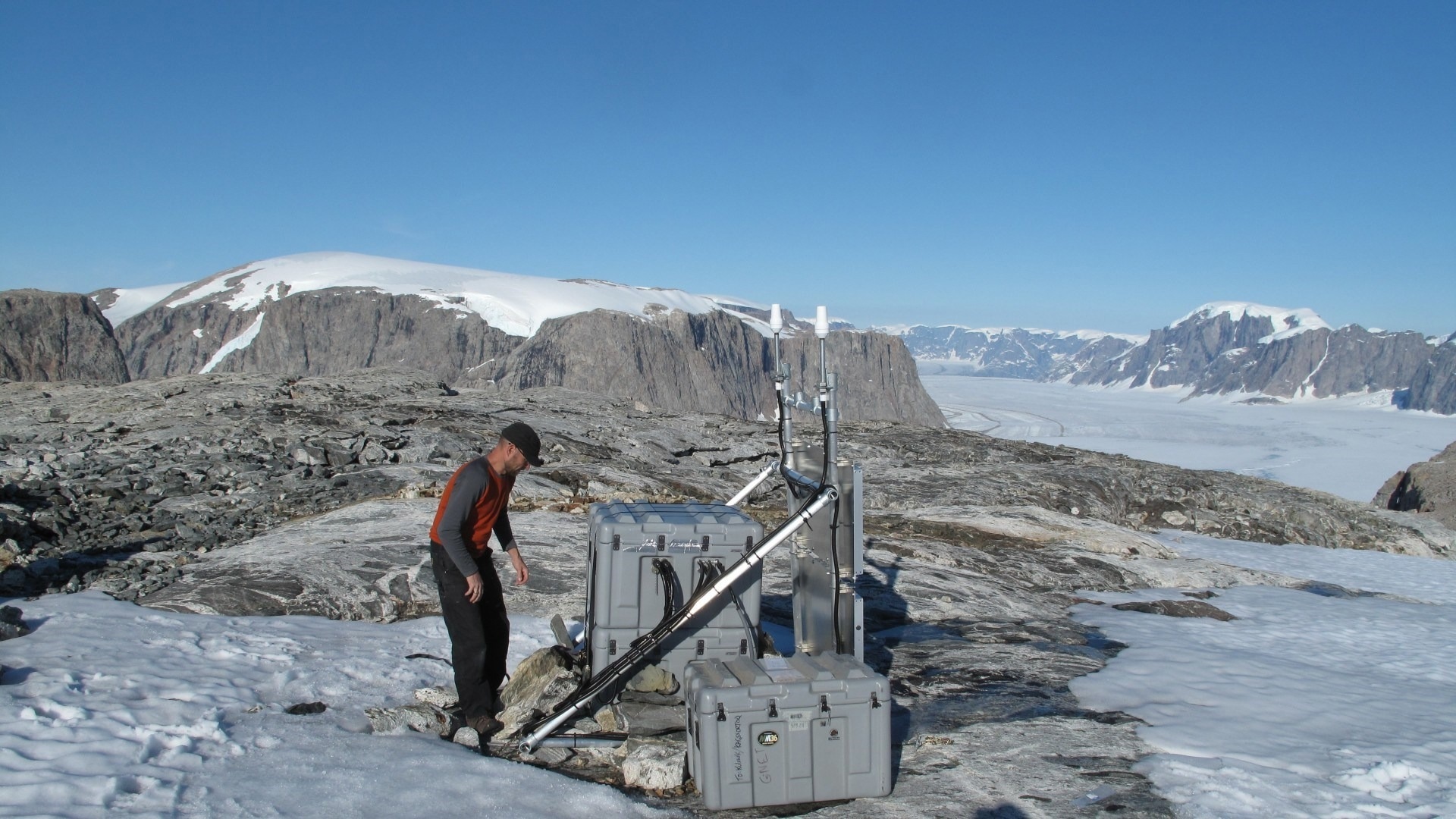In a study published in the scholarly journal Geophysical Research Letters, scientists from the Technical University of Denmark (DTU) have created a technique that makes it possible to measure ice melt on a daily basis for the first time.
 Researchers at DTU can now calculate how much the ice sheets in Greenland melt daily by using data from 61 GPS measuring stations placed directly on the bedrock around Greenland. Image Credit: Technical University of Denmark
Researchers at DTU can now calculate how much the ice sheets in Greenland melt daily by using data from 61 GPS measuring stations placed directly on the bedrock around Greenland. Image Credit: Technical University of Denmark
The bedrock beneath Greenland shifts slightly as the ice sheet melts, a phenomenon that has been occurring with increasing frequency recently.
This happens because the land underneath rises due to a reduction in pressure from the ice above. This elevation change can be used to calculate the amount of ice melting from Greenland’s ice sheet and its rate of loss.
This is the first time we can measure the entire mass loss of the ice sheet day by day. For example, satellite gravity measurements show mass loss every month. Other methods only provide a single estimate per year. This means that we have not been able to monitor the sudden changes in ice mass loss that often occur in the summer period.
Valentina Barletta, Senior Researcher, Department of Space Research and Technology, Technical University of Denmark
Barletta has taken the lead in developing the novel approach.
According to statistics from the previous 20 years, Greenland is losing an average of 5 cubic kilometers of ice every week. This equates to draining Denmark’s largest lake, Arresø, 40 times every week.
The new GPS approach offers a huge step forward in monitoring ice mass loss in Greenland and understanding the dynamics underlying ice melting. As a result, groups such as the UN Intergovernmental Panel on Climate Change (IPCC) could receive better estimates of future ice sheet melting and the contribution of meltwater to global sea level rise.
The Measurements Can Be Used for Flood Warnings in Greenland
The new technique and ice loss estimates can also be utilized in practical applications, such as informing Greenland residents if substantial meltwater is suddenly discharged.
By calculating daily changes in the ice sheet's mass, we can monitor the melting season and warn the local population if there is a risk of flooded rivers. For example, in 2012, the bridge collapsed at Kangerlussuaq, also known as Søndre Strømfjord, due to extreme melting. With the new GPS-based method, we can better monitor and potentially warn if such events are imminent.
Shfaqat Abbas Khan, Professor, Department of Space Research and Technology, Technical University of Denmark
Data Provided by State Measurement Stations in Greenland
Measurements are taken using the Danish state’s GNET, which comprises 61 GNSS stations scattered around Greenland.
GNSS refers to the Global Navigation Satellite System, comprising the American GPS and the European Galileo. With GNSS technology, movements in the bedrock over time can be observed with sub-millimeter precision.
We are pleased that data from the GNET stations is so widely used and gives us new opportunities to accurately monitor climate change in Greenland. For example, with the new measurement method developed by DTU. Therefore, we make a major effort to maintain and improve these measurement stations.
Malte Nordmann Winther-Dahl, AC Specialist, Danish Agency for Data Supply and Efficiency
He also worked as the project manager for GNET at the Danish Geodata Agency, which is part of the Ministry of Climate, Energy, and Utilities.
SDFI owns GNET, which operates in conjunction with DTU.
So far, researchers and the IPCC have mainly employed distinct ways to quantify ice mass loss:
- NASA’s GRACE satellites monitor gravity changes, which can be used to calculate mass changes and ice loss.
- Altimetry satellites assess direct changes in ice elevation as well as ice movements via satellite, which determine how much ice streams vary over time. The faster the ice melts into the ocean, the more ice is removed from the ice sheet.
DTU Space and the DTU Computing Center housed at DTU Compute, collaborated to produce the study and the novel technique. The center’s expertise and computing power were critical for managing massive volumes of GPS data and conducting simulations during the project.
Journal Reference:
Barletta, V. R., et. al. (2024) GNET Derived Mass Balance and Glacial Isostatic Adjustment Constraints for Greenland. Geophysical Research Letters. doi:10.1029/2023GL106891